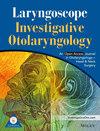Clinical Validation of Manual Measurement of Cochlea Length With Post-Operative Electrode Insertion Depth: A Pilot Study
Abstract
Objective
To clinically validate manual measurement of cochlear length from pre-operative image of cochlea with post-operative image of cochlear implant (CI) electrode.
Methods
Temporal bone computer tomography (CT) scans of 23 ears were available for this pilot study. The inner ear was three-dimensionally (3D) segmented, and cochlea length was manually measured for preferred angular depth depending on inner ear anatomical types for CI electrode length selection. Post-operative CT scans were made available for electrode reconstruction to measure electrode length inside the cochlea to validate pre-operative measurement of cochlear length.
Results
Normal anatomy (NA) inner ear was identified in 11 ears, enlarged vestibular aqueduct syndrome (EVAS) in 4 ears, incomplete partition (IP) type I in 2 ears, cochlear hypoplasia (CH) in 5 ears, and otosclerosis in 1 ear. Cochlear length was measured for 650° of angular depth in NA ears, 540° in EVAS and otosclerosis, 360° in IP type I, and for available angular depth depending on the development of the cochlea in CH type. Based on the cochlea length measured, a closely matching electrode length was chosen for implantation from 1 CI manufacturer. Partial insertion was seen in 2 NA ears, 1 otosclerosis ear, and 1 CH ear, whereas full insertion of the chosen electrode was achieved in the remaining 19 ears.
Conclusion
Manual measurement of cochlea length from 3D image of cochlea is a practical way of choosing electrode length for preferred angular insertion depth depending on the cochlea anatomy.
Level of Evidence
Between level 2 and 3.


 求助内容:
求助内容: 应助结果提醒方式:
应助结果提醒方式:


